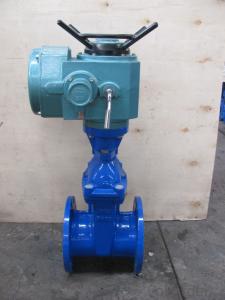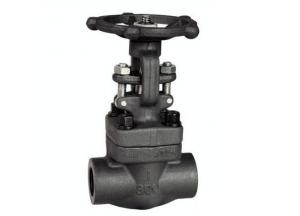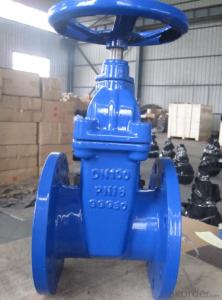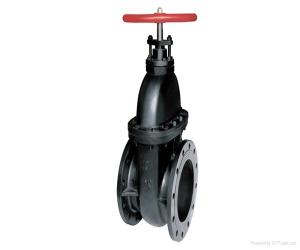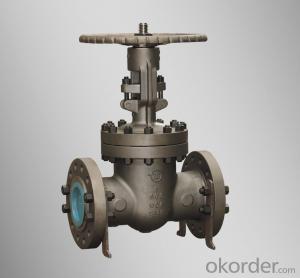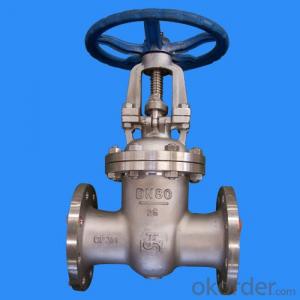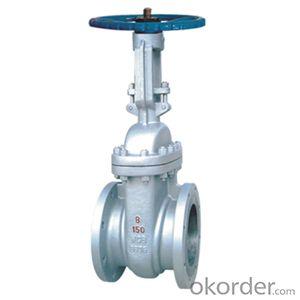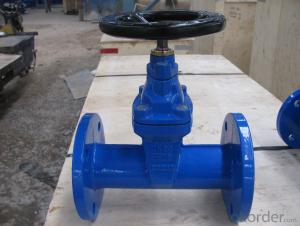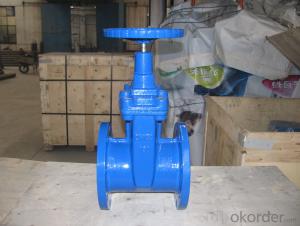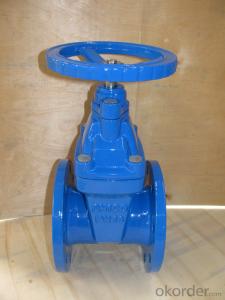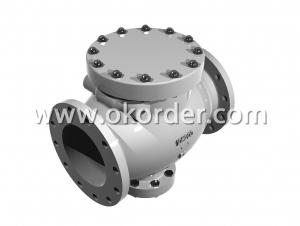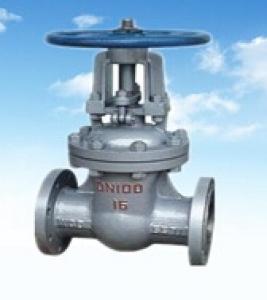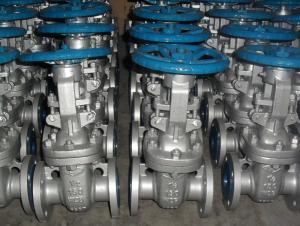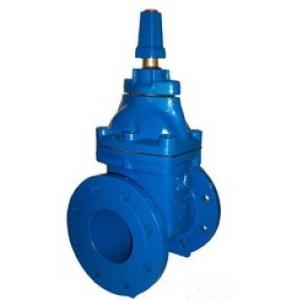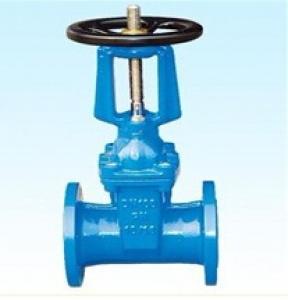Gate Valve DIN3352 F4 Resilient Soft Seat Non-rising
- Loading Port:
- Tianjin
- Payment Terms:
- TT OR LC
- Min Order Qty:
- 200 kg
- Supply Capability:
- 10000 kg/month
OKorder Service Pledge
OKorder Financial Service
You Might Also Like
1.Structure of Gate Valve Description:
A gate valve, also known as a sluice valve, is a valve that opens by lifting a round or rectangular gate/wedge out of the path of the fluid. The distinct feature of a gate valve is the sealing surfaces between the gate and seats are planar, so gate valves are often used when a straight-line flow of fluid and minimum restriction is desired. The gate faces can form a wedge shape or they can be parallel. Gate valves are primarily used to permit or prevent the flow of liquids, but typical gate valves shouldn't be used for regulating flow, unless they are specifically designed for that purpose. Because of their ability to cut through liquids, gate valves are often used in the petroleum industry. For extremely thick fluids, a specialty valve often known as a knife valve is used to cut through the liquid. On opening the gate valve, the flow path is enlarged in a highly nonlinear manner with respect to percent of opening. This means that flow rate does not change evenly with stem travel. Also, a partially open gate disk tends to vibrate from the fluid flow. Most of the flow change occurs near shutoff with a relatively high fluid velocity causing disk and seat wear and eventual leakage if used to regulate flow. Typical gate valves are designed to be fully opened or closed.When fully open, the typical gate valve has no obstruction in the flow path, resulting in very low friction loss.
2. Main Features of the Gate Valve:
• Valve body cavity using non-toxic epoxy resin,both inside and outside flashboard completely is coated with rubber
• Free of water pollution
• High manufacturing accuracy
• High strength
• Environmental protection and energy saving
• Good visual effect
3. Images

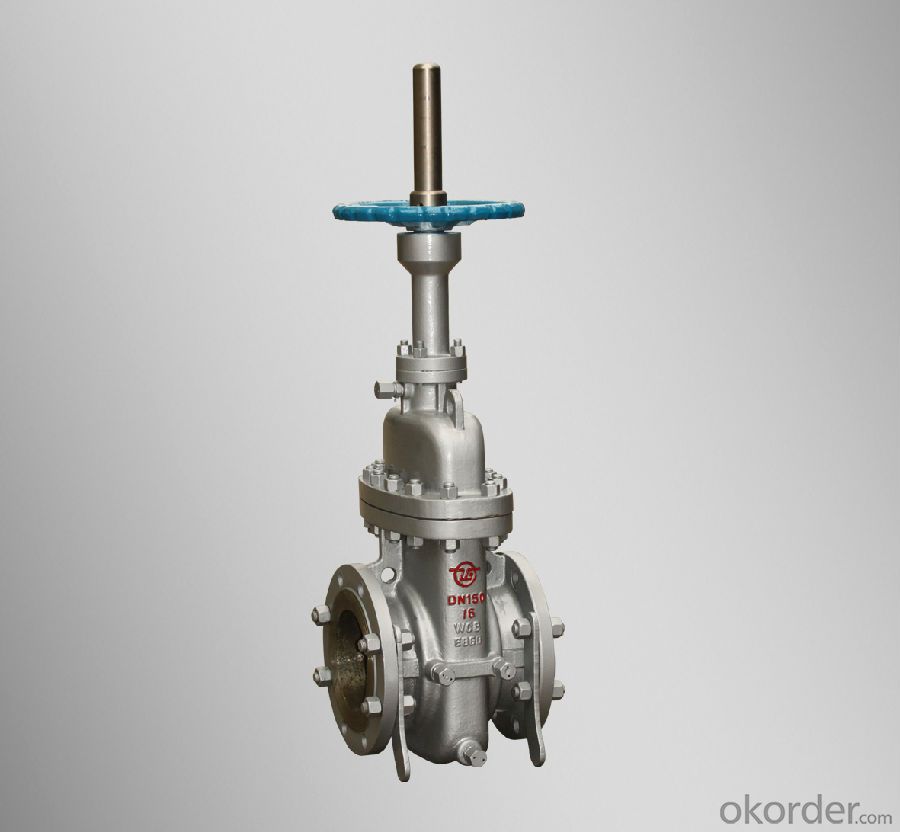
4. Gate valve Specification
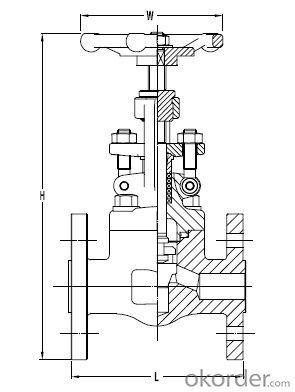
5.FAQ
1. What's are the characteristics of gate valve?
The distinct feature of a gate valve is the sealing surfaces between the gate and seats are planar, so gate valves are often used when a straight-line flow of fluid and minimum restriction is desired. The gate faces can form a wedge shape or they can be parallel.
2. What is the work principle of gate valve ?
The gate faces can form a wedge shape or they can be parallel. Gate valves are primarily used to permit or prevent the flow of liquids, but typical gate valves shouldn't be used for regulating flow, unless they are specifically designed for that purpose. Because of their ability to cut through liquids, gate valves are often used in the petroleum industry.
3. What is the structure?
Bonnets provide leakproof closure for the valve body. Gate valves may have a screw-in, union, or bolted bonnet. Screw-in bonnet is the simplest, offering a durable, pressure-tight seal. Union bonnet is suitable for applications requiring frequent inspection and cleaning. It also gives the body added strength. Bolted bonnet is used for larger valves and higher pressure applications.
- Q: The difference between cut-off valve and gate valve
- Structurally, the gate valve for the gate, down to the front and back seat seal; globe valve with spherical, taper and flat spool, down to the valve seat seal. Functional stop valves are generally used for pressure flow control. Gate valves are used for isolation.
- Q: What is the difference between the model z81x-16q and z81x-16c of the groove gate valve?
- Not 16qIs 16p, the former body is stainless steel, and the latter body is carbon steel
- Q: Analysis of the advantages of elastic seat sealing gate valve?
- Most of the valve is forced seal, that is, when the valve closed, to rely on external force to force the gate to the seat, in order to ensure the sealing surface sealing.When opening the gate valve, when the gate lift height is equal to 1:1 times of the gate diameter, the passage of the fluid is completely unblocked, but at run time, this position is unable to monitor. In actual use, the top of the stem is used as a sign, i.e., the open position, as its fully open position. Temperature changes appear to consider locking phenomenon, usually open to the vertex position, and then rewind 1/2-1 circle, as a fully open valve position. Therefore, the opening position of the gate valve is determined by the position of the gate (i.e. the stroke). The sealing surface is easy to wear and tear, affecting the service life. When opening and closing, gate and valve seat two sealing surface friction, sliding, to medium pressure under the action of easy to produce abrasions, wear, affect sealing performance, shorten service life.
- Q: What do you mean by gate valve type RVHX-0150-10 and Z45X-16Q?
- Z45x-16q, Z means gate valve, 4 means flange connection, 5 refers to dark rod gate valve, X means rubber seal, 16 refers to nominal pressure 1.6MpaRVHX means manual gate valve, 150 refers to the caliber of DN150, and 10 indicates nominal pressure of 1.0MPa
- Q: What are the main types of gate valves?
- sealing surface configuration can be divided into wedge gate valve and parallel gate valve, wedge gate type valve can be divided into: single gate type, dual gate plate and the flexible gate type; parallel gate valve can be divided into single and dual gate gate plate.
- Q: What's the difference between open rod gate and dark rod gate valve?
- 3, dark rod valve is located inside of the body, in the process of opening and closing, stem only rotation move, the gate in the valve body lifting; the valve stem rod driven gate valve with the valve stem of the lifting drive thread in the external body, according to the direction of movement of the stem and the position of judge the gate opening and closing and position;
- Q: Which is more expensive, bronze gate valve or brass gate valve?
- But the obvious weakness of brass is its poor strength, relatively large volume, and its lack of corrosion resistance.
- Q: What does valve qz45x - 10q mean?
- Crown valve pressWhat does Q stand for? I'm not sure. It's probably made of ductile iron"Z" means "gate valve"4 represents flange connection5 represents the dark bar (1 represents the Ming pole)X stands for rubber seal and soft seal10q stands for 10 pressure
- Q: What's the difference between a soft seal gate valve and a hard sealed gate valve?
- The difference is that the form of the gate seal surface is different.General gate valves are generally leaking, easy to rust and other phenomena. Soft sealing gate valve (elastic seat sealing gate valve), gate material for cast iron lining rubber, overcome the shortcomings of the general gate valve, such as poor sealing, elastic fatigue, easy to rust, etc.. Soft sealing gate valve is a new product of the traditional gate valve.
- Q: Fire protection gate valve from the wall how many distance there is no regulation?
- 1 meters away from the wall, leaving the maintenance and replacement distance
Send your message to us
Gate Valve DIN3352 F4 Resilient Soft Seat Non-rising
- Loading Port:
- Tianjin
- Payment Terms:
- TT OR LC
- Min Order Qty:
- 200 kg
- Supply Capability:
- 10000 kg/month
OKorder Service Pledge
OKorder Financial Service
Similar products
Hot products
Hot Searches
